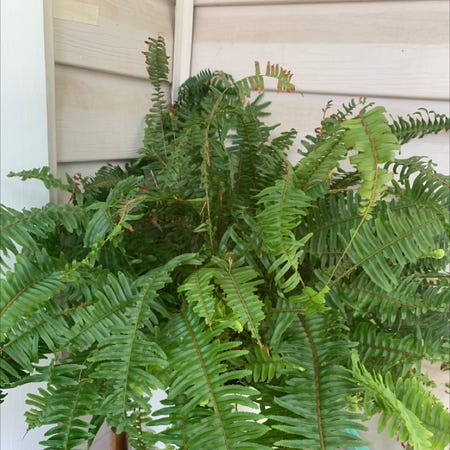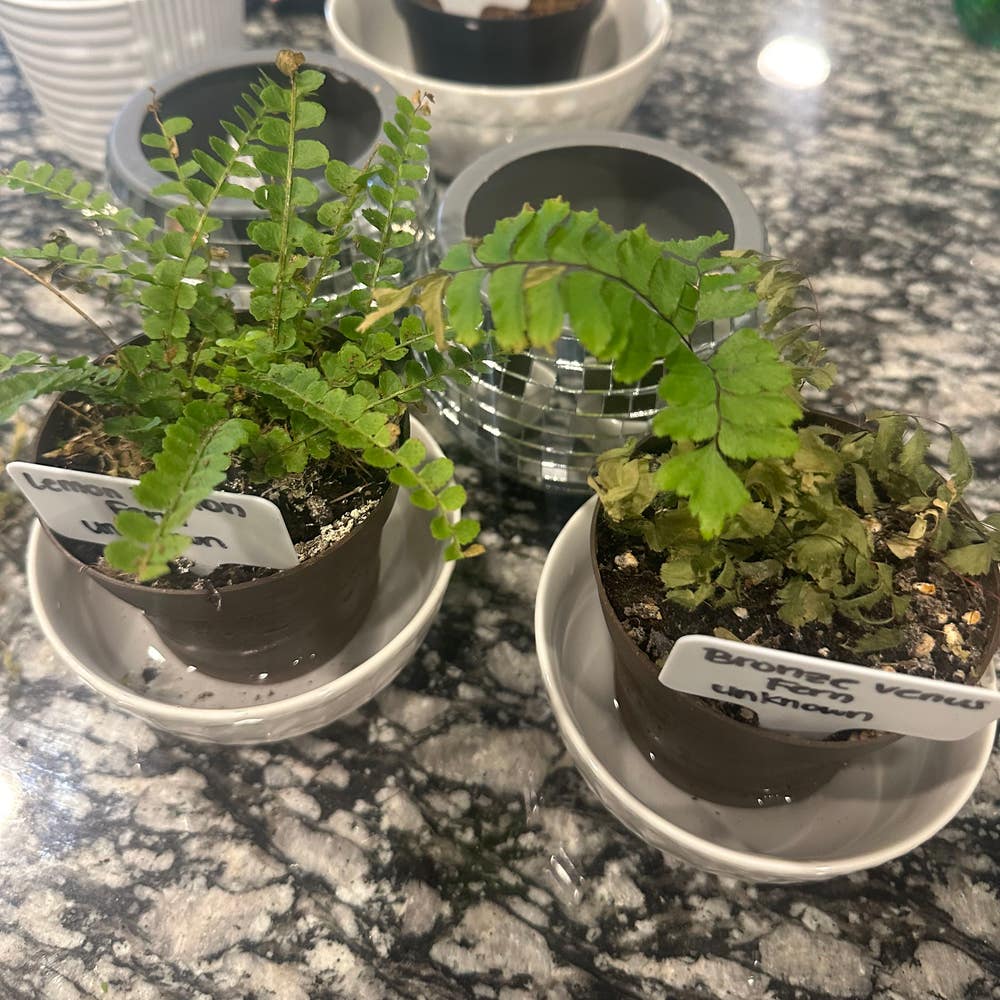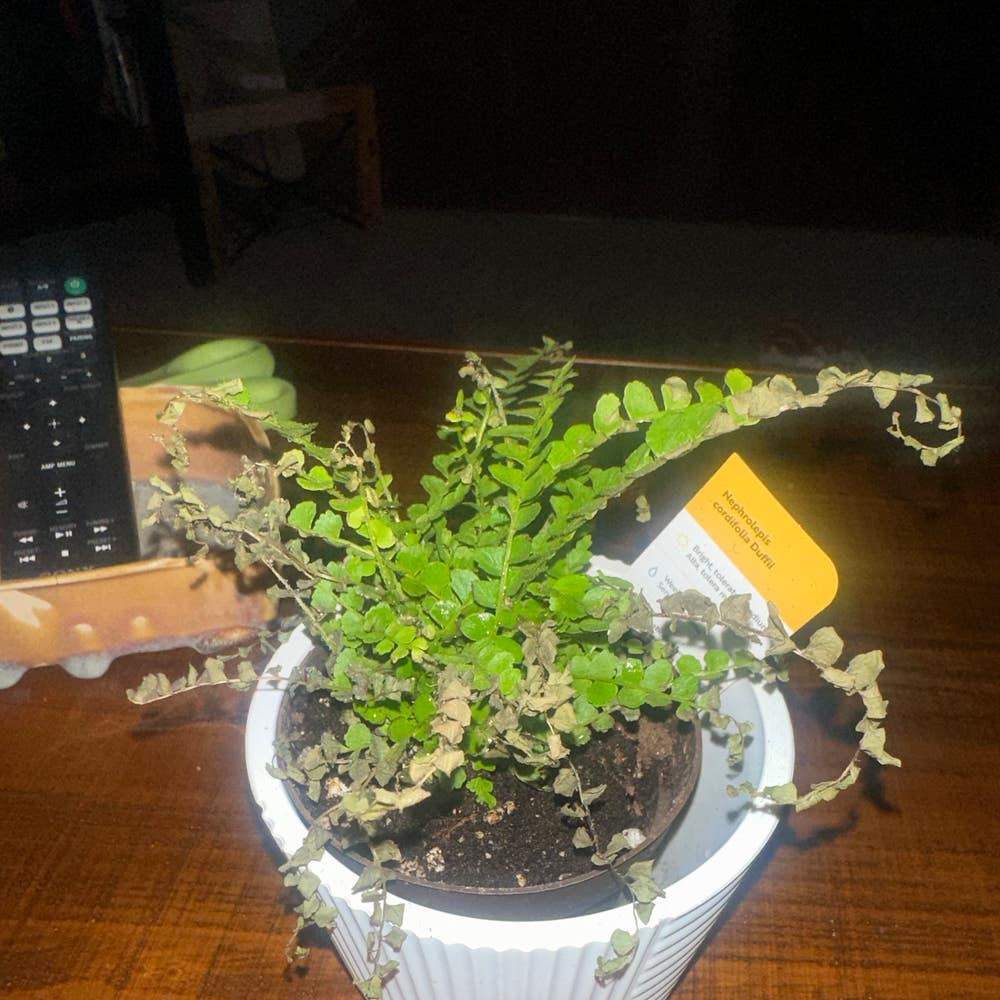





































Nephrolepis Biserrata
Also known as
Bold Sword Fern, Bold Sword Fern, Macho Fern, Crisped Feather Fern, Nephrolepis biserrata., Australian Sword Fern and Macho Giant Sword Fern
Taxonomy

Nephrolepis biserrata
Nephrolepis
Nephrolepidaceae
Polypodiales

How to care for Nephrolepis Biserrata
How often to water your Nephrolepis Biserrata

every 7
Nephrolepis Biserrata needs 0.5 cups of water every 7 when it doesn’t get direct sunlight and is potted in a 5" pot.
Use our water calculator to personalize watering recommendations to your environment or download Greg for more advanced recommendations for all of your plants.

Water 0.5 cups every
7
Finding light for Bold Sword Fern in your home

a window
Nephrolepis Biserrata can tolerate being far from a window and light source.
Place it less than 6 feet from a south-facing window to ensure it receives enough light to survive 💪.
Select your region to see how the current weather in your area affects the placement of Nephrolepis Biserrata in your home 🏡.
How to fertilize Nephrolepis Biserrata

Most potting soils come with ample nutrients which plants use to produce new growth.
By the time your plant has depleted the nutrients in its soil it’s likely grown enough to need a larger pot anyway.
To replenish this plant's nutrients, repot your Nephrolepis Biserrata after it doubles in size or once a year—whichever comes first.
-
Why did Greg change my African Sword Fern to a Kimberly Queen ?????? #KimberlyQueenFern
-
What is the best way to water a fern? #GregGang
-
I’m in love with our new plant, a Macho Fern ! #PlantAddict #PlantTherapy #GregGang #fernlover
-
@
-
The ends of my fern are starting to curl, can someone explain why this is happening? Please advise #ErectSwordFern
-
Browning fern? #LemonButtonFern I know these guys are lower light, and according to my placement these should be in good shape. But this guy is browning quickly. I thought maybe it needed more light so I put it it in a shaded corner of my patio, where there is indirect sunlight. It got really dark, so I’m not sure if it burned it? But it keeps telling me to water the soil and the soil feels so wet. I don’t wanna overwater. Thoughts? The same thing is happening to my Venus fern.
-
I repotted into a smaller pot. I take this little start that it was the right move! #PlantsMakePeopleHappy #FernFriends
-
Sage was struggling at my south window. I just can’t seem to keep those ferns alive inside. It’s temporarily outside to get a nature boost and I see new growth! Fingers crossed!
-
My lemon button fern is browning! I have only had him for a week and have moved him closer and farther away from the window in attempts to stop it, but I can’t figure it out! Any suggestions? #LemonButtonFern
-
Hello, I hope someone can help me. I’m trying to save this fern I rescued from a green waste bin and I had already cut out all the dead leaves leaving the ones in the pics. I can’t tell though the status of her roots, it seems it used to be quite a big plant that has been neglected. I’d like to repot it but I don’t know how much soil should I remove from the roots? Any advice is appreciated 😊 Thank you!
Care Summary for Nephrolepis Biserrata

Nephrolepis Biserrata
 Greg recommends:
Greg recommends:
 Water
Water
0.5 cups every 7 days
 Placement
Placement
< 6ft from a window
 Nutrients
Nutrients
Repot after 2x growth
Based on the 4” pot your plant is in, and that it doesn’t get direct sunlight.

 Trending in your area
Trending in your area
 Similar to Nephrolepis Biserrata
Similar to Nephrolepis Biserrata
✨ Discover rare plants

Fernleaf Lavendar

Treasure Flower

Crassula 'Calico Kitt…

Euphorbia Ammak

Bonsai Crassula

Parrot Pitcher Plant

Variegated Arrowhead …

Ruby Ball

Echeveria Arrow

Ceropegia simoneae

Ace of Spades

Hoya pottsii 'Khao Ya…

Miss All-American Bea…

Scotch Moss

Blushing Aeonium

Milky Widow's Thrill





































